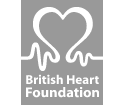You don’t need to be a smoker to suffer the health effects of smoking. The smoker only inhales about 15% of the smoke from a cigarette. The other 85% is absorbed into the atmosphere or inhaled by other people. Second-hand smoke becomes invisible a...
Want to see the rest of this article?
Would you like to see the rest of this article and all the other benefits that Issues Online can provide with?
- Useful related articles
- Video and multimedia references
- Statistical information and reference material
- Glossary of terms
- Key Facts and figures
- Related assignments
- Resource material and websites

 Passive smoking
Passive smoking








